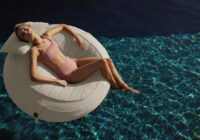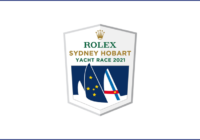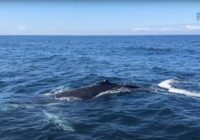Maritime NZ is urging recreational boat users to take greater caution and follow the Boating Safety Code, following several alarming incidents and near misses this summer.
Maritime NZ Principal Advisor Recreational Craft Matt Wood said while most boaties seem to follow good practice, examples such as the rescue of Will Fransen off the coast of Whangamatā and various collisions around the country showed many were still risking their lives.

“We’re really pleased Mr Fransen made it home alive, but we urge all boaties to not rely on luck as he did. In that incident, the fisherman was not adequately prepared – especially considering he was skippering alone offshore.
To start with, he was not wearing a lifejacket and he did not have a personal locator beacon (PLB) on him.
“Had he worn a personal locator beacon (PLB), he could have sent an alert immediately that would have been sent to all vessels in the area and he could have been rescued very quickly. The kayaker rescued off Palliser Bay this week, did have a PLB on him and so when his mobile phone stopped working he used that to alert the Rescue Coordination Centre NZ, which sent a helicopter and police boat to get him.”
Mr Wood said that kayaker did several things right as he wore a lifejacket and wetsuit and had two forms of waterproof communication on him: a mobile phone in waterproof bag and a PLB.
“Most incidents happen suddenly, and people enter the water with little or no warning and there is no time to put a life jacket on or grab your phone. Wearing a properly fitted lifejacket gives you the best opportunity for survival should you end up in the water unexpectedly. Everyone out on the water should always have two waterproof ways to call for help and if you’re alone, one of these should be on your body.”
The Boating Safety Code says:
- Wear your lifejacket
- Take two waterproof ways to call for help
- Check the marine weather forecast
- Avoid alcohol
- Be a responsible skipper
Maritime NZ and its partners promote the code through engagement and education with recreational craft users and their associations, and ongoing communications and advertising campaigns.
In the past two years, Maritime NZ also provided more than $1.6 million in community grants to 45 projects and initiatives aimed at reducing fatalities and risks.
A key purpose of the fund is to support campaigns and collaboration led by the members of New Zealand’s Safer Boating Forum, a coalition of organisations, chaired by Maritime NZ, dedicated to improving safety in the recreational boating sector.
Mr Wood says it is disappointing that some people still choose not to following the safety protocols.
“I also want to reiterate that it’s an offence to expose other water users to unnecessary risk and regional council harbourmasters are on the water around the country monitoring for risky and illegal behaviour.
“We ask people to know, understand and follow the rules for the area they are boating in to limit the danger they put themselves and others in. And follow the Boating Safety Code every time you go on the water,” he says.
For more information about how to be safe on the water, visit saferboating.org.nz.
Maritime NZ and its partners continue to deliver the national compliance campaign “No Excuses” over the holiday period. This campaign involves 14 regional councils and so far 1500 interactions with boaties have been recorded. Those interactions show 90% of vessels had enough life jackets on board, 77% of boaties were wearing life jackets, and there were 440 instances of non-compliance identified with 101 infringement referrals and 63 infringements issued on the spot.
During the holiday period Maritime NZ were advised of around 20 incidents involving recreational craft. The worst was a fatality that occurred in the Marlborough Sounds on 23 December. There were also several serious collisions in other parts of the country and some involved the reporting of unsafe behaviour.









